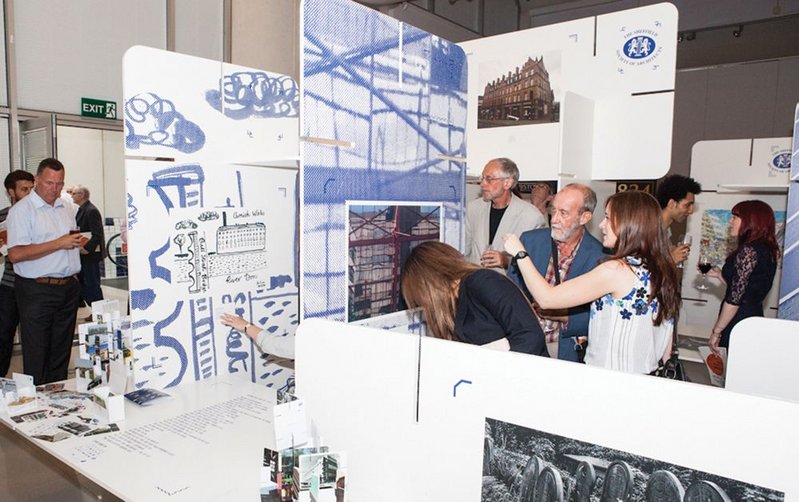Sheffield Society of Architects is celebrating its 125th anniversary with an exhibition of images of the city sourced by its residents
In this digital age of instant communication and immediate recording of everything, it’s increasingly rare and delightful to receive a physical postcard with a picture of a place on one side and ‘wish you were here’ message on the reverse.
To mark its 125th anniversary, the Sheffield Society of Architects, a chapter of the RIBA, asked Sheffield residents to send them a postcard with an image of their dearest places in the city and a reason for its selection on the back. The idea was to recover and record a history of everyday Sheffield architecture from the point of view of the people who live in and experience the city, instead of the usual top-down history of significant buildings selected by architectural historians. This way, we hoped to reveal some previously overlooked or unknown places and to see the city from a perspective other than our own architecturally trained view.
We received a generous response of photographs, sketches, and poems. These included the usual landmarks, both extant and lost, such as ‘the Hole in the Road’ (Castle Square), alongside more personal places that wouldn’t traditionally be included in an architectural history, such as people’s back gardens.

We chose 125 of the nominations to reproduce in postcard format, and cut them with slots so they could be used to build houses à la Eames’ House of Cards. These also became the exhibition catalogue. We selected 34 to create human-scale postcards, which slotted together to form the exhibition. They were curated to describe a cross-section of Sheffield places from the historic to the contemporary, from the traditional to the modern, and from the personal to the well known.
The selection of the nominations was based on three criteria: first, of course, a great image; a story that linked the person with the place, giving the postcard a particular vitality that the image alone couldn’t portray; and a place that resonated with Sheffield’s identity. Places such as now-closed Castle Market, and Jefferson Sheard’s recently listed Moore Street Substation all received multiple nominations. Equally, Henderson’s Relish, the Peace Gardens with their balls of steel, the Crucible, and Allies & Morrison’s Cheesegrater car park, have all become Sheffield institutions in their own right.
There were also numerous omissions: I was surprised not to see any mention of the meeting point Coles Corner, or either of the football grounds.
The response included a variety of the usual landmarks, alongside more personal places, such as people’s back gardens
The exhibition was designed to be deliberately non-linear and demountable in order to travel around Sheffield and pop up elsewhere in a different configuration. It opened in June at the Millennium Galleries to help launch Sheffield Design Week, and then moved to some empty stalls at the new Moor Market. Almost all of the contributions were by non-professional image makers and this was also deliberate. The only narrative I wished to present was the fondness in which Sheffield is held by the people who make it.
As Ian Nairn wrote of Sheffield in 1961, ‘it is typical of this exciting, exasperating city that it never seems to assume its true importance’. As the city struggles to redefine and redevelop itself again for the 21st century, this sentiment remains so true. But as this exhibition demonstrates, Sheffielders love their city and its places through which they define their lives.
Dr Stephen Parnell is a lecturer at the Department of Architecture and Built Environment, University of Nottingham
DEAR SHEFFIELD
... will be at the Moor Market in Sheffield (RIBAJ February 2014) until the end of July; at the Arts Tower in Sheffield, 3-6 September and 13-17 October; and the Sheffield Institute of Arts at Sheffield Hallam University at the end of September.